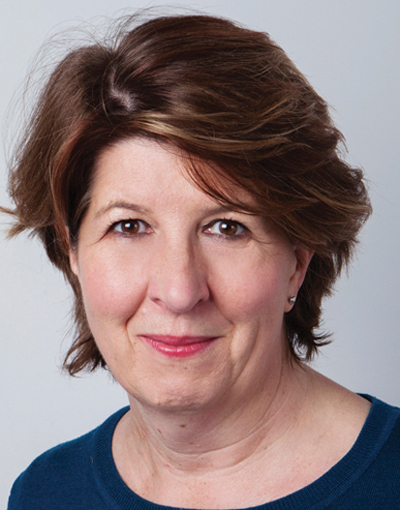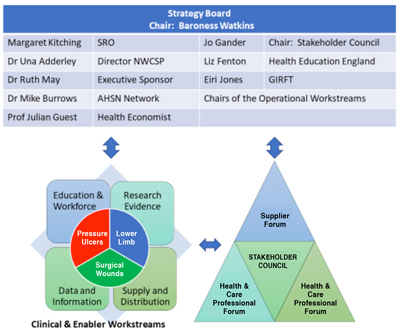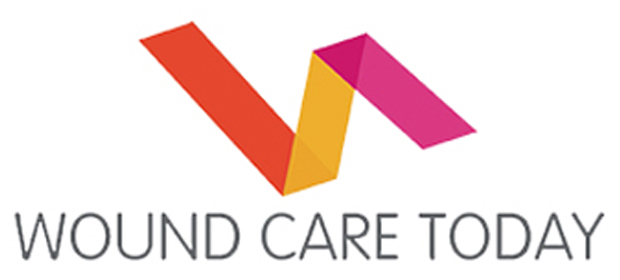
Una Adderley, Director, National Wound Care Strategy Programme, Yorkshire and Humber Academic Health Science Network.
At the end of 2015, the Burden of Wounds study highlighted that in 2012–13, the annual NHS cost of managing 2.2 million patients with wounds after adjusting for comorbidities was £4.5–£5.1 billion (Guest et al, 2015). Since then, the cost will have increased and if this issue is not adequately addressed, wound care expenditure may increase by more than 50% for an average CCG / health board over the next five years (Gray et al, 2018).
Evidence points to marked unwarranted variation in UK wound care services, underuse of evidence-based practices and overuse of ineffective practices (Guest et al, 2015; Gray et al, 2018). This offers major opportunities to improve the quality of chronic wound care through innovative solutions that will improve wound healing, prevent harm, increase productivity of staff, and produce financial savings in line with the requirements of the recent NHS Long Term Plan (NHS England, 2019).
The National Wound Care Strategy Programme (NWCSP) has been developed from several previous initiatives designed to address the issue of sub-optimal wound care. These include NHS England’s Leading Change, Adding Value Wound Care Project (2016) and discussions in the House of Lords (2016 and 2017).
Evidence points to marked unwarranted variation in UK wound care services, underuse of evidence-based practices and overuse of ineffective practices (Guest et al, 2015; Gray et al, 2018). This offers major opportunities to improve the quality of chronic wound care through innovative solutions that will improve wound healing, prevent harm, increase productivity of staff, and produce financial savings in line with the requirements of the recent NHS Long Term Plan (NHS England, 2019).
The National Wound Care Strategy Programme (NWCSP) has been developed from several previous initiatives designed to address the issue of sub-optimal wound care. These include NHS England’s Leading Change, Adding Value Wound Care Project (2016) and discussions in the House of Lords (2016 and 2017).
The purpose of the National Wound Care Strategy Programme (NWCSP) is to scope the development of a wound care national strategy for England that focuses on improving care relating to:
- Pressure ulcers
- Lower limb ulcers
- Surgical wounds.
 ) and the React to Red programme http://www.reacttoredskin.co.uk/
) and the React to Red programme http://www.reacttoredskin.co.uk/  . However, wounds on the lower limb (such as leg and foot ulcers) have received much less attention, despite accounting for over a third of all wounds. Evidence suggests that more than half of leg ulcers do not have a recorded diagnosis so are unlikely to receive correct treatment (Guest et al, 2015). Complex surgical wounds are also an area of concern since unhealed surgical wounds incur much patient suffering and considerable healthcare resource (Guest et al, 2018).
. However, wounds on the lower limb (such as leg and foot ulcers) have received much less attention, despite accounting for over a third of all wounds. Evidence suggests that more than half of leg ulcers do not have a recorded diagnosis so are unlikely to receive correct treatment (Guest et al, 2015). Complex surgical wounds are also an area of concern since unhealed surgical wounds incur much patient suffering and considerable healthcare resource (Guest et al, 2018).Excellence in standards of care
The NWCSP aims to develop recommendations which support excellence in the standards of care that relate to preventing, assessing and treating people with chronic wounds to optimise healing and minimise the burden of wounds for patients, carers and health and care providers. It is underpinned by the principle that wound care should not be viewed as a separate clinical issue but be integrated into care of underlying co-morbidities that cause or contribute to wounding and delayed/ non-healing. The NWCSP is a long-term commitment to improving wound care and recognises that success will depend on recognising and addressing the interdependencies between the different professional groups and services involved in wound care. The key priority is to improve patient care.
The NWCSP consists of three clinical workstreams (Pressure ulcers, Lower limb ulcers and Surgical Wounds), four enabler workstreams (Research, Data and Information, Education and Workforce and Supply and Distribution), and a Stakeholder Council which oversees three Stakeholder Forums (Supplier, Health and Care Professionals, and Patients, Carers and Citizens). All these bodies are overseen by the NWCSP Board (Figure 1).
The NWCSP consists of three clinical workstreams (Pressure ulcers, Lower limb ulcers and Surgical Wounds), four enabler workstreams (Research, Data and Information, Education and Workforce and Supply and Distribution), and a Stakeholder Council which oversees three Stakeholder Forums (Supplier, Health and Care Professionals, and Patients, Carers and Citizens). All these bodies are overseen by the NWCSP Board (Figure 1).

Workstream roles
The role of the clinical workstreams is to scope the evidence base to make evidence-informed recommendations to inform the development of clinical guidelines, pathways and standards that will reduce unwarranted variation, improve safety and optimise patient experience and outcomes and to identify clinical questions where further research is needed.
The role of the four enabler workstreams is to support the work of the clinical workstreams and to develop recommendations to support the adoption and spread of the outputs from the clinical workstreams. The role of the Stakeholder Council is to ensure that the work of the clinical and enabler workstreams is informed by the views of stakeholders.
The role of the four enabler workstreams is to support the work of the clinical workstreams and to develop recommendations to support the adoption and spread of the outputs from the clinical workstreams. The role of the Stakeholder Council is to ensure that the work of the clinical and enabler workstreams is informed by the views of stakeholders.
All workstreams have recruited experts in their field who are starting to craft ideas and recommendations. The Pressure Ulcer workstream is developing collaborative relationships between the National Stop the Pressure Programme and the React to Red programme to unite work in this field. The Lower Limb workstream is developing an evidence-informed national generic pathway for lower limb ulceration. The Surgical Wounds workstream is focussing on the challenge of surgical wounds healing by secondary intention (whether by design or due to dehiscence) and are working closely with the GIRFT programme https://gettingitrightfirsttime.co.uk/  which is already undertaking work into surgical site infection.
which is already undertaking work into surgical site infection.
 which is already undertaking work into surgical site infection.
which is already undertaking work into surgical site infection. All the clinical workstreams recognise there is an urgent need for valid and reliable metrics to measure wound care activity and outcomes. They are working closely with the Data and Information workstream to identify how this might be achieved with minimal impact on the clinicians at the frontline of care. The Research workstream is supporting all the workstreams through helping with the identification of relevant existing research to underpin any recommendations made, where possible.
The Education and Workforce workstream are currently identifying existing educational resources and developing ideas to enable access to good quality generic wound care education for all those involved in wound care. Their remit includes patients and carers and care professionals, as well as health professionals such as nurses, podiatrists, medics and pharmacists. Alongside the existing wound care courses offered by universities and other bodies, there is interest in the possibility of developing easily accessible ‘bite-size’ online learning.
The membership of the Supply and Distribution Workstream includes representation from the Supply Chain Coordinated Limited (SCCL) and the NHS Category Tower Providers alongside representation from supplier organisations. This workstream is working to align wound care product categories and confirming current wound product spend and volume. The aim to develop an improved supply and distribution model.
The membership of the Supply and Distribution Workstream includes representation from the Supply Chain Coordinated Limited (SCCL) and the NHS Category Tower Providers alongside representation from supplier organisations. This workstream is working to align wound care product categories and confirming current wound product spend and volume. The aim to develop an improved supply and distribution model.
Become a stakeholder
The input of stakeholders is seen as central to the whole programme. There is an ongoing recruitment drive to encourage anyone with an interest in wound care who would like to be consulted on the emerging recommendations to sign up to a Stakeholder Forum. Interested stakeholders can do this through http://bit.ly/2RB72yL  . As the workstreams develop their draft recommendations, these will be shared for consultation with the relevant Stakeholder Forums.
. As the workstreams develop their draft recommendations, these will be shared for consultation with the relevant Stakeholder Forums.
 . As the workstreams develop their draft recommendations, these will be shared for consultation with the relevant Stakeholder Forums.
. As the workstreams develop their draft recommendations, these will be shared for consultation with the relevant Stakeholder Forums.Already there is evidence of progress. The workstreams are sharing ideas, identifying opportunities to reduce duplication and developing innovative proposals to improve care. There is still much to achieve, especially around encouraging adoption and spread but the NWCSP is off to a strong start.
References
Guest JF, Ayoub N, McIlwraith T, et al (2015) Health economic burden that wounds impose on the National Health Service in the UK BMJ Open;5:e009283. doi: 10.1136/bmjopen-2015-009283
Gray TA, Rhodes S, Atkinson RA, et al (2018) Opportunities for better value wound care: a multiservice, cross-sectional survey of complex wounds and their care in a UK community population. BMJ Open; 8:e019440. doi: 10.1136/bmjopen-2017-019440
Guest JF, Fuller GW, Vowden P (2018) Costs and outcomes in evaluating management of unhealed surgical wounds in the community in clinical practice in the UK: a cohort study. BMJ Open;8:e022591. doi: 10.1136/bmjopen-2018-022591
NHS England (2019) The Long Term Plan. https://www.longtermplan.nhs.uk
Gray TA, Rhodes S, Atkinson RA, et al (2018) Opportunities for better value wound care: a multiservice, cross-sectional survey of complex wounds and their care in a UK community population. BMJ Open; 8:e019440. doi: 10.1136/bmjopen-2017-019440
Guest JF, Fuller GW, Vowden P (2018) Costs and outcomes in evaluating management of unhealed surgical wounds in the community in clinical practice in the UK: a cohort study. BMJ Open;8:e022591. doi: 10.1136/bmjopen-2018-022591
NHS England (2019) The Long Term Plan. https://www.longtermplan.nhs.uk

